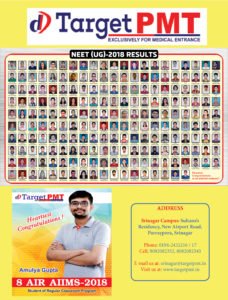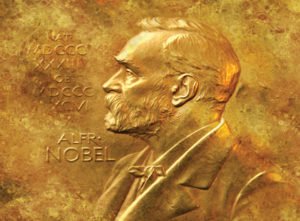
“All of my remaining realisable assets are to be disbursed as follows: the capital, converted to safe securities by my executors, is to constitute a fund, the interest on which is to be distributed annually as prizes to those who, during the preceding year, have conferred the greatest benefit to humankind. The interest is to be divided into five equal parts and distributed as follows: one part to the person who made the most important discovery or invention in the field of physics; one part to the person who made the most important chemical discovery or improvement; one part to the person who made the most important discovery within the domain of physiology or medicine; one part to the person who, in the field of literature, produced the most outstanding work in an idealistic direction; and one part to the person who has done the most or best to advance fellowship among nations, the abolition or reduction of standing armies, and the establishment and promotion of peace congresses. The prizes for physics and chemistry are to be awarded by the Swedish Academy of Sciences; that for physiological or medical achievements by the Karolinska Institute in Stockholm; that for literature by the Academy in Stockholm; and that for champions of peace by a committee of five persons to be selected by the Norwegian Storting (Norwegian Parliament). It is my express wish that when awarding the prizes, no consideration be given to nationality, but that the prize is awarded to the worthiest person, whether or not they are Scandinavian.”
The above paragraph that you perused is an excerpt of the will Alfred Nobel signed on November 27, 1895, a few days before his death at the Swedish-Norwegian Club in Paris.
But after his death, when the will was opened, it was opposed by the relatives of Nobel and the awarders he had named refused to act upon his will. This controversy took its toll, and it was not until1901-on the 5th death anniversary of Alfred Nobel-the Nobel Prizes could be awarded.
However, in 1968, an additional award in Economic Sciences was introduced by the Sveriges Riksbank, Sweden’s central bank in the memory of Alfred Nobel.
Nobel prizes are regarded world’s most prestigious awards presented to the individuals and organisations, from around the globe, who make exceptional contributions in the fields of Physics, Chemistry, Physiology or Medicine, Literature, Peace and Economics. These prizes are awarded annually in Stockholm, Sweden and Norway on the 10th December-the death anniversary of Alfred Nobel.
The titles in Physics, Chemistry and Economics, are assigned by the Royal Swedish Academy of Sciences, and in Physiology or Medicine, the Karolinska Institute awards the Prize, the Swedish Academy awards prize in Literature while the Norwegian Nobel Committee awards the Prize in Peace.
The awardees receive a gold medal, a diploma and a sum of money from the King of Sweden and the King of Norway for Peace Prize. Remember, Norway and Sweden were united under one monarch until 1905 –when Norway became independent.
Who Was Nobel
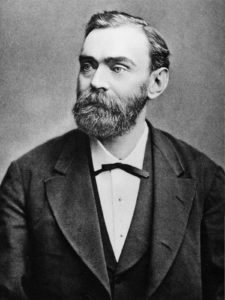
Alfred (Bernhard) Nobel was born on October 21, 1833, in Stockholm, Sweden. His father Immanuel Nobel was a successful inventor, engineer and a businessman who had married Caroline Andrietta Ahisell in 1827.
Later, when Immanuel’s business suffered losses, the family moved to Russia in 1837. Nobel was given a first-class education, and by the time he was 16, he could speak and write in Swedish, Russian, English, French and German. Later, in 1850, Nobel was sent to Paris to study chemistry where he met Ascanio Sobrero, who had three years earlier invented nitroglycerine-a highly unstable explosive liquid.
After a year Alfred went to the United States, where he worked for four years and then returned to his family in Russia, where he worked with his father in his factory. After the Crimean War ended in 1856, his father’s business suffered significant losses. With the result, the company went bankrupt in 1859, and the family had to return to Sweden in 1863. Alfred soon built a small laboratory in his father’s estate and began to carry out experiments on making nitroglycerine safe to handle, transport and to use. Meanwhile, he invented a way to control the detonation of nitroglycerine in the same year, and two years later, in 1865, he invented an improved detonation called blasting cap that inaugurated the modern use of high explosives.
However, the handling of nitroglycerine was still dangerous, not to mention 1864, when during the experiments –his factory blew up, killing his younger brother Emil and several other people. But Alfred Nobel did not stop and built another factory. Consequently, his patience paid off and in 1867, by chance, he discovered that mixing nitroglycerine with fine sand called ‘Kiesselguhr’ would turn the liquid into a paste that was much safer to use and handle. Nobel named it ‘Dynamite’, (Greek word dynamis meaning ‘Power’).
He made other inventions as well, such as synthetic rubber, leather, and artificial silk, and by the time of his death he had 355 patents registered on his name.
Nobel died of a cerebral haemorrhage at his villa in San Remo, Italy on December 10, 1896. He was never married. Nobel has also written plays, poems and novels almost all of which remained unpublished till date.
Yet, the question remains that why would Nobel leave the bulk of his fortune to establish the Nobel Prizes?
It is believed that in 1888, when Nobel’s brother Ludvig had died while staying in Cannes, France. The obituaries ran in French newspapers on his death but confused him with Alfred Nobel and to make things worse one paper spotted an obituary with the headline, “Le Marchand de la mort est mort”, meaning ‘The merchant of death is dead”. When Nobel came to know that his public image, after his invention of dynamite, has been termed a merchant of death, he felt disgusted with himself. This incident turned his mind to write down his will.
However, it is also believed that he did so out of moral regret over the increasingly lethal, dynamite and other products he invented to use in wars. But he confided in none of his relatives about his will before his death.
The Process of Selection for the Nobel Peace Prize Winners

From September the Norwegian Nobel Committee in Oslo, Norway prepares to receive nominations, and 1st February is the deadline for submission of nominations. The committee makes a short list of candidates from February to March. Then the body of advisors reviews the report from March to August.
In October, the committee chooses the winners through a majority vote, and the names are announced. On the 10th of December, laureates receive the prize in Oslo, Norway.
The Selection Process of Winners for Physics, Chemistry, Physiology or Medicine, Literature and Economics
In September, the Nobel Committee sends out confidential forms to qualified nominators, January 31st of the following year is the deadline to receive complete nomination forms.
By the end of May, the Nobel Committee sends the report to specially appointed experts.
Between June and August, the report signed by all members of the committee with recommendations is submitted to the Royal Swedish Academy. In September the academy gets the final report. Subsequently, in October, the laureates are chosen, and the names are announced. And, on December 10th, the winners are awarded the prize.
2018-Nobel Laureates
This year, the Nobel Laureates will receive the Prizes from the King of Sweden, Carl Gustaf XVI. And in Oslo, Norway, the Nobel Peace Prize Laureates will receive their Prize in the presence of King Harald V of Norway. As always, they have already been announced in October. These include:
Physics

Arthur Ashkin: Ashkin, an American scientist, best known for his work to create optical tweezers, was born on 2nd September 1922, in Brooklyn, New York.
He received his early education at Brooklyn’s James Madison High School in 1940 and then graduated in physics from Columbia College in 1947. Following his PhD in Nuclear Physics from Cornell University in 1952, he joined AT & T Bell Laboratories and worked there for 40 years till his retirement in 1992.
Ashkin is the co-discoverer of photorefractive effect in the piezoelectric crystal and is also known for his studies in laser harmonic generation, non-linear optics in optical fibres. He is presently working in his lab at home. Ashkin has won many awards and this year shared the Nobel Prize in Physics with Donna Strickland and Gérard Mourou.
Ashkin received half of the prize “for the optical tweezers and their application to biological sciences”, while Donna Strickland and Gérard Mourou received another half jointly.

Gérard Albert Mourou: Mourou was born on 22nd June 1944, Albertville, France. He shared this year’s Nobel Prize in Physics along with Donna Strickland, for the invention of chirped pulse amplification (CPA), a technique later used to create ultrashort, very high-intensity laser pulses. The duo was awarded jointly half of the Prize, while the other half went to Arthur Ashkin.
Mourou is an A. D. Moore Distinguished University Professor Emeritus at the University of Michigan and a member and professor of Haut College at the Ècole Polytechnique. He also was the founding director of the Centre for Ultrafast Optical Science in 1990 at the University of Michigan.
Mourou also has been the director of the Laboratoire d’Optique Appliquée, France, from 2005 to 2009. Following his PhD from Pierre and Marie Curie University in1973, he went to the United States and joined the University of Rochester in 1977 as a professor, where he with Donna Strickland carried out the Nobel Prize-winning experiments and work in the laboratory.

Donna Theo Strickland: Strickland was born on 27th May 1959, in Guelph, Ontario, Canada. She graduated in 1981 at McMaster University with a B. Eng. Degree in engineering physics. She earned her PhD in1989 from the Institute of Optics at the University of Rochester.
She joined the University of Waterloo as an Assistant professor and is currently an associate professor therein.
Strickland was awarded the Nobel Prize in Physics for her work with her doctoral advisor Gérard Mourou and thus became the third women after 55 years to win the Prize, after Marie Curie in 1903 and Maria Goeppert-Mayer in 1963.
Their invention at the Laboratory for Laser Energetics in Rochester University led to the development of the field of high-intensity ultrashort pulses by light beams, which are capable of making precise cuts, laser surgeries-especially eye, medicine and other applications.
Chemistry
This year, the Royal Swedish Academy of Science awarded three laureates with Nobel Prize in Chemistry. One half of the prize was presented to Frances Hamilton Arnold and the other half jointly to George Pearson Smith and Sir Gregory Paul Winter.
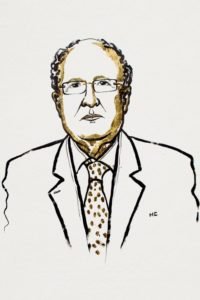
Sir Gregory Paul Winter: He was born on 14th April 1951 in Leicester, UK. He received his early education from the Royal Grammar School, Newcastle upon Tyne. After that, he got enrolled at Trinity College, Cambridge where he earned his PhD in 1977, for research on the amino acid sequence of tryptophanyl tRNA synthesis from the bacterium Bacillus stearothermophilus. Later, he completed his postdoctoral study from the same University.
Winter is known for his research and inventions relating to humanise, using phage display, antibodies for therapeutic uses which won him 2018 Nobel Prize in Chemistry.
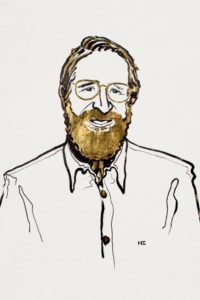
George Pearson Smith: Smith, best known for phage display, was born on March 10th, 1941, at Norwalk, Connecticut, US. He graduated from Haverford College in Biology and then got his PhD awarded in bacteriology and immunology from Harvard University. Later he moved to Columbia, Missouri where he joined the faculty of the University of Missouri in 1975.
Smith is a Curator’s Distinguished Professor Emirates of Biological Sciences at the University of Missouri. He has won a few awards apart from sharing this year’s Nobel Prize in Chemistry with Frances Arnold and Greg Winter.

Frances Hamilton Arnold: Arnold was born on July 25th, 1956, at Edgewood, Pennsylvania, U.S.A. She completed her high school education at Taylor Allderdice High School in 1974. She earned Bachelor of Science in mechanical and aerospace engineering from Princeton University in 1979 and then completed PhD degree in 1985 in chemical engineering from the University of California, Berkley and subsequently completed her postdoctoral research in biophysical chemistry therein.
Arnold joined California Institute of Technology (Caltech) as a visiting associate professor and later got promoted to professor in 1996. She served as a director of Caltech’s Donna and Benjamin M. Rosen Bioengineering Centre in 2013. Since 2017, Arnold is holding the position of the Linus Pauling Professor of Chemical Engineering, Bioengineering and Biochemistry at Caltech. There, she developed protein evolution methods and its application in the eco-friendly chemical synthesis and alternative energy, including the development of highly active enzymes and microorganisms to convert renewable biomass to fuels and chemicals.
Arnold shared the 2018 Nobel Prize in Chemistry “for pioneering the use of ‘directed evolution’ to engineer enzymes”.
Physiology or Medicine

Professor James Patrick Allison: Allison was born on 7th August 1948 at Alice, Texas, USA. Following his school education at Alice High School, Allison earned a B. S degree in microbiology from University of Texas at Austin in 1969 and then PhD from the same University in 1973. He then worked for three years as postdoctoral fellow at Scripps Clinic and Research Foundation La Jolla, California and later returned to Texas in 1077. After that, he worked as an assistant biochemist and assistant professor at M.D Anderson’s new Cancer Centre for eight years, i.e. up to 1984. Subsequently, he served as a professor at the University of California, San Francisco up to 1997. Then, he moved to the Memorial Sloan-Kettering Cancer Centre and headed the Ludwig Centre of Cancer for eight years and remained a professor at the Weill Cornell Institute from 2004-12. Later, he returned to Texas where he was appointed the chair of immunology at the M.D Anderson’s Cancer Centre.
After winning several national and international awards, Allison is awarded this year’s Nobel Prize in Physiology or Medicine jointly with Tasuku Honjo for “their discovery of cancer therapy by inhibition of negative immune regulation”.

Tasuku Honjo: Honjo was born on January 27th, 1942, Kyoto, Japan. He did his M.D degree from the Kyoto University and was awarded PhD in1975 from the same university. From 1971-1973, Honjo was a visiting fellow at the Department of Embryology, Carnegie Institute of Washington before moving to the U.S National Institute of Health (NIH) in Maryland to study the genetic basis for the immune response as a fellow from 1974-79.
Also, he served as assistant professor at the University of Tokyo from 1974 to 1979, as a professor at Osaka University from 1979 to1984, and as a professor at Kyoto University from 1984 to 2005. He became Deputy Director-General and Distinguished Professor at Kyoto University for Advanced Study (KUIAS). He is presently an honorary member of the American Association of Immunologists and a member of the Japanese Society for Immunology. Honjo has several awards and honours on his name besides this year’s shared Nobel Prize with James Patrick Allison. The pair has already won the Tang Prize in 2014 for the same work and achievement.
Economic Sciences

Paul Michael Romer: Romer was born on 6 November 1955 in Colorado, USA. Romer–currently a professor of economics at the Stern School of Business at New York University –is a prominent American economist and policy entrepreneur. He completed Bachelor of Science in mathematics from Phillips Exeter Academy in 1977. He did his MA Economics in 1978 and then a PhD in 1983 in Economics from the University of Chicago. He is very well known for the contributions he made in the development of endogenous growth theory. In 1997, Romer was named one of America’s 25 most influential people by Time magazine.
He has taught at various reputed institutes such as the University of Rochester, the University of Chicago, the University of California, Stanford, New York to name a few.
He has served as chief economist and Senior Vice President of World Bank from October 2016 to July 2018. He shared the 2018 Nobel Prize in Economic Sciences with William Nordhaus ‘for integrating technological innovations into long-run macroeconomic analysis’.
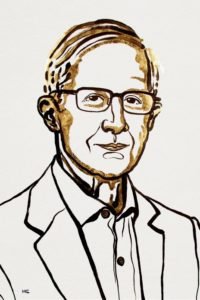
William DawbneyNordhaus: Nordhaus was born on May 31st, 1941, at Albuquerque, New Mexico, USA. He shares 2018 Nobel Prize in Economic Sciences “for integrating climate change into long-run macroeconomic analysis”. He graduated from Phillips Academy in Andover in 1963 and then MA from Yale in 1973 and a PhD in Economics from Massachusetts Institute of Technology (MIT) in 1977.
He has been a member of the faculty of Yale University since 1967 and a professor of economics at the School of Forestry and Environmental Studies therein since 1973. He was the first chairman of the American Economic Association Committee on Federal Statistics and was awarded “Distinguished Fellow” by the American Economic Association in 2004.
Nordhaus has authored almost two dozen books which include Invention, Growth and Welfare, Is Growth Obsolete?, Warming the World, Managing the Global Commons, The Efficient Use Of Energy Resources, The Economics of Global Change among others.
Nordhaus is credited with developing the DISE (Dynamic Integrated Climate-Economy Model) and RICE (Regional Integrated Climate-Economy Model) models; integrated assessment models of the interplay between economics, energy use and climate change.
Peace

Dr Denis Mukwege: Mukwege was born on 1st March 1955 in Chicago. He earned his graduation in medical sciences from the University of Burundi in 1983 and then started working as a Pediatrician in the rural Lemera Hospital near Bukavu. Later, he went to France where he studied gynaecology and obstetrics at the University of Angers. He did his PhD for his research on “traumatic fistulas in the Eastern Region of the Democratic Republic of the Congo” in 2015.
Returning home from France, Mukwege resumed working in the Lemera Hospital. After the First Congo war, however, he returned to Bukavu and founded the Panzi Hospital there in 1999. Mukwege is currently working in the same hospitals. Since its foundation, the hospital has treated more than 40,000 survivors of sexual violence.
Mukwege has more than two dozen awards, national and international, and six honorary doctorate degrees to his credit. He shared the 2018 Nobel Peace Prize with Nadia Murad for “their efforts to end the use of sexual violence as a weapon of war and armed conflict”.

Nadia Murad: Nadia Murad was born in Kocho, Iraq. She was in secondary school when she, with her two sisters and thousands of other women and children, were taken captive on August 3, 2014, by the ISIS armed forces. Her mother was executed as she was considered too old for sexual enslavement. Murad, along with other young girls, was subjected to sexual violence, trafficking and sometimes forced marriages. After suffering this unimaginable brutality, she was finally able to escape.
Murad then managed to migrate to Germany where she received medical attention and was reunited with other survivors. For her outspoken courage, she has been appointed as the United Nations Goodwill Ambassador for the Dignity of Survivors of Human Trafficking. She shared the Nobel Peace Prize 2018 with Denis Mukwege.
Literature
The Nobel Prizes have not been awarded on several occasions in the past since its launch in 1901. It was missed due to the outbreak of World War I & II and was also reserved due to lack of suitable winners on several occasions.
This year, The Swedish Academy has again postponed the Nobel Prize in Literature after 18 women made sexual assault allegations against a French photographer Jean-Claude Arnault, husband of Katarina Frostenson, an academy member and author. The 2018 Nobel Prize for Literature will be handed out at 2019’s ceremony, alongside the award to next year’s winner.
Turing Award in Computer Science

Turing Award also referred to as the Computer Science equivalent of the Nobel Prize, is annually given by the Association for Computing Machinery (ACM-est.1947) to the individual for technical contributions in the field of computer sciences. This award is given in the memory of Alan Mathison Turing, an English mathematician and a pioneer in artificial intelligence.
It was first given in 1966, to the American computer scientist, Alan Jay Peril, who has written a compiler for the ALGOL computer programming language.
This year’s Turing awards have not been given yet.
Fields Medal in Mathematics

The Fields Medal also described as the mathematician’s Nobel Prize is given after every four years to the individuals (2-4) under 40 years of age at the International Congress of the International Mathematical Union (IMU) for their outstanding or seminal research in mathematics.
The Fields Medal originated from surplus funds raised by John Charles Fields (1863–1932), a professor of mathematics at the University of Toronto. The first two Fields Medals were awarded in 1936 Finnish mathematician Lars Ahlfors and American mathematician Jesse Douglas, and it has been awarded every four years since 1950.
This Year’s Field’s Medal Awardees
Caucher Birkar: For the proof of the boundedness of Fano varieties and for contributions to the minimal model program.

Born: July, 1978
Place: Kurdistan, Iran
Original Name: Faraydoun Derakhshani
Current Position: Professor, University of Cambridge
Alessio Figalli: For contributions to the theory of optimal transport and its applications in partial differential equations, metric geometry and probability.

Born: 2nd April, 1984
Place: Rome, Italy
Current Position: Professor, ETH Zürich
Peter Scholze: For transforming arithmetic algebraic geometry over p-adic fields through his introduction of perfectoid spaces, with application to Galois representations, and for the development of new cohomology theories.

Born: 11 December, 1987
Place: Dresden, Germany
Current Position: Professor, University of Bonn and Director, Max Plank Institute for Mathematics.
Akshay Venkatesh: For his synthesis of analytic number theory, homogeneous dynamics, topology, and representation theory, which has resolved long-standing problems in areas such as the equidistribution of arithmetic objects.

Born: 21 November, 1981
Place: New Delhi, India
Current Position: Professor, Stanford University
